Unraveling the Stories Behind the Ingredients
At Casa Gangotena’s restaurant, every dish is the result of centuries of culinary traditions both pre-Columbian and Spanish, revitalised with maverick new techniques. It is the meeting place of various Ecuadorian regions and their local produce. It is the hard graft and passion of small, local producers cultivating artisanal, heritage ingredients. It is so much more than the sum of its parts.
This is one of the core pillars of Casa Gangotena’s cocina mestiza concept: a strong emphasis on Ecuador’s highest quality, iconic ingredients.
“Our philosophy is that corn and potatoes have the same value to us as say, lobster. To us, if it’s an Ecuadorian product we appreciate it,” explains Casa Gangotena’s head chef, Andrés Robles.
Scratch at the surface a little to reveal both the cultural significance and sometimes extraordinary stories of the producers of these key ingredients, and each morsel of each dish takes on new meaning.
Until recently, paiche was a relatively unknown fish, even within Ecuador. That is because as a river fish found deep within the Amazon region known as the Oriente, it is illegal to fish it.
But a few years ago, some of the Cofán tribe (among the oldest surviving indigenous cultures in the Ecuadorian Amazon) came up with the idea of farming the fish in pools. This was no easy feat: paiche are pre-historic-looking beasts, measuring up to three metres and weighing in at around 250 pounds (around the weight of a small pig). What’s more, they are carnivorous.
But once the tribe perfected the art, the advantages were twofold. First of all, the new trade created sustainable employment within the Cofán community. Then, there came the re-introduction of an authentically Ecuadorian food into the national diet. The project has been so successful that the fish will soon be stocked by supermarkets.
Incorporating paiche into the menu was a new challenge for Andrés.
“It’s really weird, it looks like a dinosaur, and the fillets are like no other fish. Working with paiche was a completely new ball game for me, it has bones everywhere, and we’re not used to that,” he says.
“But the meat is delicious. It has two types of meat, from the belly and the steak, which are both really different. And the flavour is neutral, almost like alligator sometimes: really weird, but great.”
On the Casa Gangotena menu, paiche is used in a take on encocado, a traditional coconut seafood dish usually found on the coast.
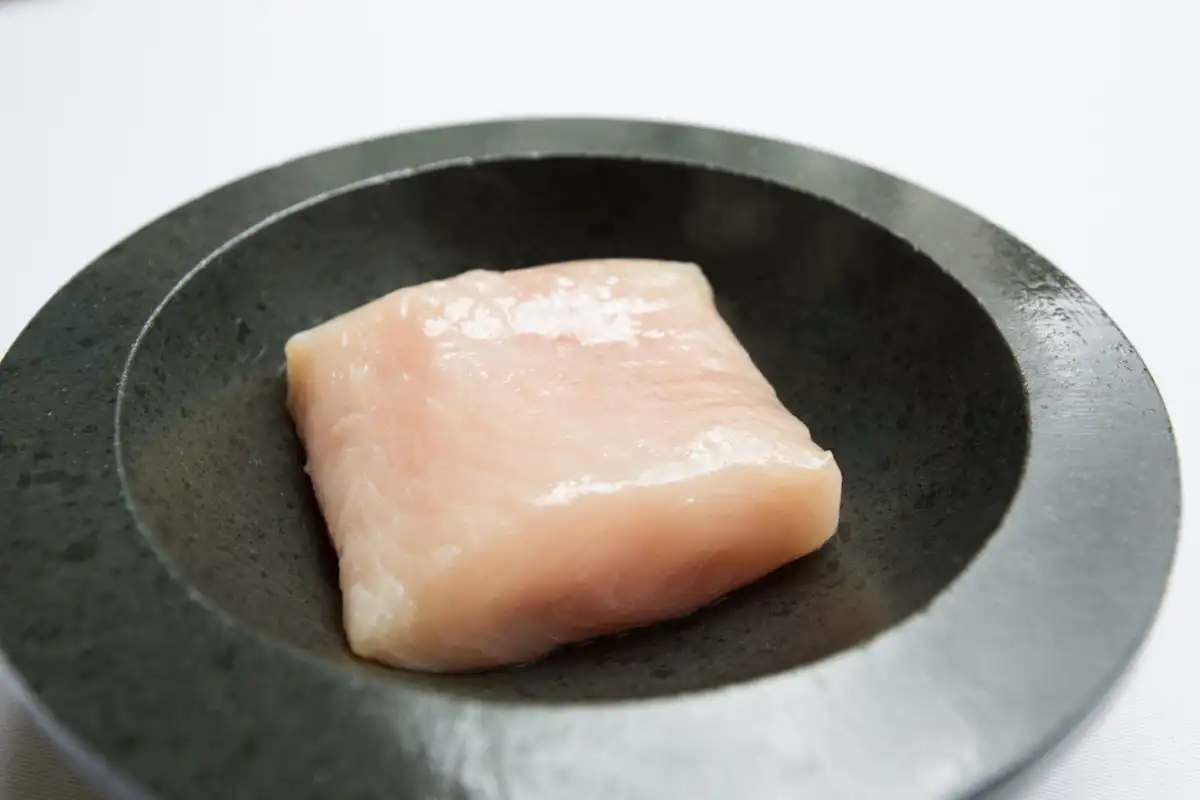
“Our way is a white encocado,” says Andrés. “That’s a white sauce with a yucca puree, and we decorate it with a crisp of cuttlefish ink to give it a bit of crunch.”
Preparation is meticulous: the fish is first marinated in a sal muera, a mixture of water with salt seasoned with orange peel, pink pepper, coriander seeds, and other things to give it more of a marine taste. “Because it is from the river it doesn’t have iodine; all sea fish have iodine,” says Andrés.
The fish is cooked sous-vide, placed in a plastic bag and cooked at 58.6° Celsius for precisely 18 minutes.
Served in a bowl of black, volcanic rock, the encocado de paiche is a star dish.
“In the restaurant, the concept with the langoustine is to mix up regions. So we serve it with a puree of chaucha potato, which is totally Andean. And it comes with a garlic foam, which is an adaption of what we have learned from Spanish colonial cuisine, and it’s a style they eat on the coast – al ajillo. They’ve all been adapted so that we can mix the regions,” says Andrés.
But in contrast to paiche, langoustine take very little preparation, simply cooked sous-vide for 12 minutes with butter and salt.
“When you have products that have a perfect flavour, you don’t have to help them,” says Andrés.
Exploring Ecuadorian Iconic Ingredients
Finding a lamb provider in Pichincha Province presented a problem for Casa Gangotena’s culinary team. The nutritious meat is now rarely used in Ecuadorian cuisine, and as a result numbers of sheep in the country have fallen to below 750,000.
Gastronomic Coordinator Eduardo Chonota happened upon the lamb of Doctor Cecilia Alcocer, an organic sheep farmer whose herd grazes freely on the páramo, one thousand metres above Quito, at a friend’s barbeque. The lamb was sustainable, healthy, and, above all, delicious.
In the restaurant, you can find Doctor Ceci’s lamb in two dishes. The first is a succulent lamb chop; the second is an adaptation of the curiously-named seco de chivo. Seco de chivo (literally in English: “dry goat”) is a traditional stew that is supposed to be made with goat, but in Ecuador can contain anything from goat, to yearling sheep, to lamb or even llama.
“If you’ve eaten seco de chivo in a market, you’ve probably eaten llama! Congratulations!” says Andrés.
The head chef explains that using lamb from the páramo and marinating it for three hours in Santa Ana craft beer elevates the Casa Gangotena version from street food classic to fine dining.
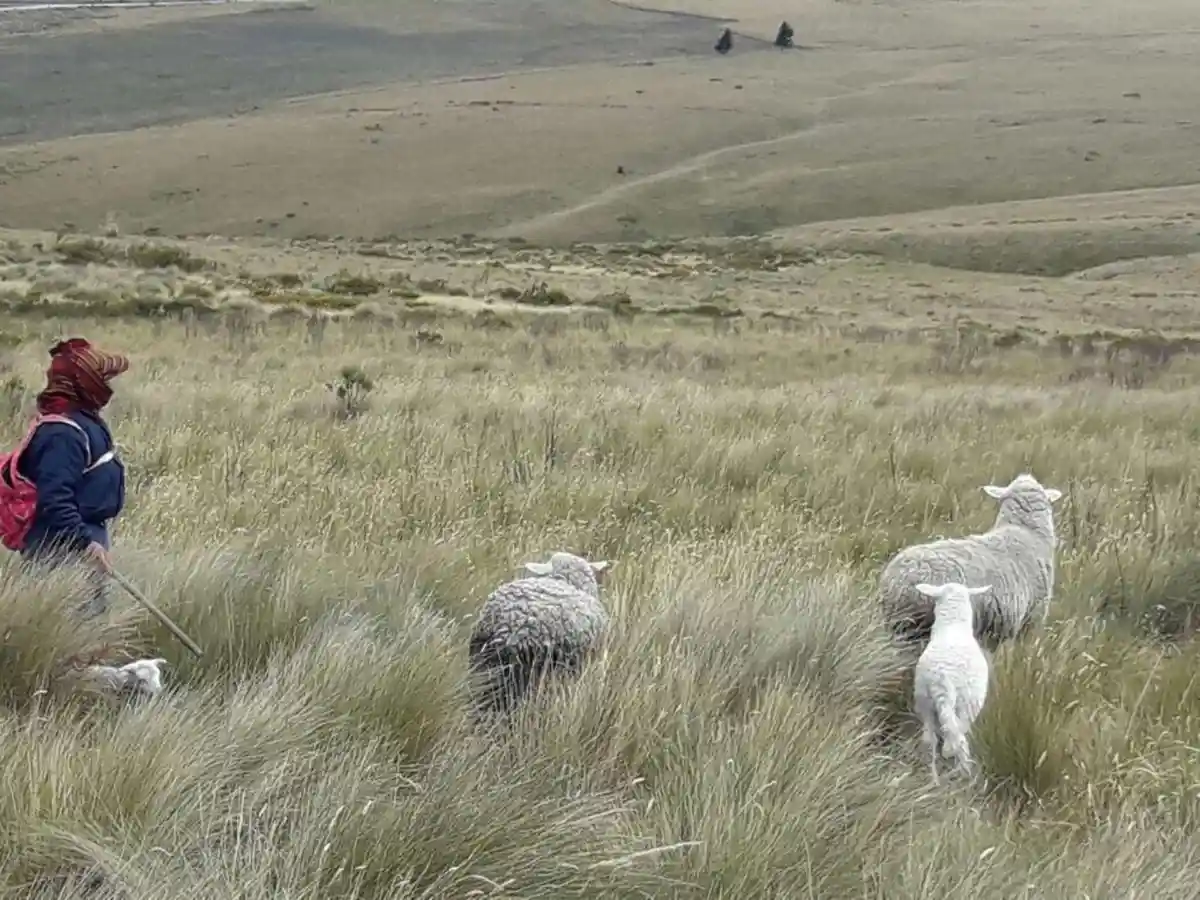
“The typical presentation of seco de chivo is rice and fried sweet plantain on the coast, here in Quito they’d add potato too,” says Andrés.
“But every typical dish changes with every different mother who cooks it. Each mother in Ecuador has their way of making a seco. Some add chicha, others naranjilla, others beer.”
For his take, Andrés replaces the fried plantain with a gluten-free plantain croquette.
But the rice? That had to stay put.
“We did a few experiments, but the rice won!” he says.
By the time the fish of the day is delivered to Casa Gangotena at around 7 P.M. each evening, it has travelled around 300 km from the Pacific Coast, in a surprisingly short amount of time. Every single day, the Flores Brothers drive their refrigerated van from Cojimíes in the Manabí province to Quito, bringing with them a daily selection of fresh, sustainably-caught fish.
Located right at the epicentre of Ecuador’s horrific April 16, 2016 earthquake which took the lives of 600 people, something strange happened within Cojimíes as the ground shook. Whereas neighbouring towns Pedernales and Canoa were almost entirely destroyed by the tremor, Cojimíes remained largely intact, which experts attribute to the quality of its soil.
Despite its physical resilience, like the whole of the coast the economy of Cojimíes suffered, and locals were encouraged to reignite it with artisanal fishing, in which the fisherman sells directly to the consumer, cutting out intermediaries. The Flores Brothers, now the most popular provider in fine dining circles in Quito, needed little encouragement.
“They arrive here about 7 at night, and we choose from the fish that they have – that’s why it’s fish of the day: right now we’ve got red snapper, but if tomorrow a robalo came along, I’d snap it up! Fresh fish!” says Andrés. The chef admits that the brothers bring out a competitive edge in him – if he sees a great fish reserved by another restaurant, he immediately wants to steal it.
But the service and quality of the Flores Brothers comes at a price. Whereas a normal sea bass fillet would cost Andrés $9.50 per kg, artisanal fish comes in at around $22 per kg – more than double.
“But it’s quality,” explains Andrés. “It gives so much added value to your dish, your restaurant, because first of all, it’s sustainable, and you’re supporting small businesses.”
Soon, the preparation of the dish will depend on what kind of fish the brothers deliver, testing Andrés’s creativity and skill. This is part of Andrés’s plan to attract more ‘foodies’ to the restaurant, creating an ever-changing section of the menu in which two starters and two main courses are new each month.
“Because although it’s easier for me to have a set menu, it’s much cooler to have the preparation always changing every month. People are going to be amazed!” says Andrés.
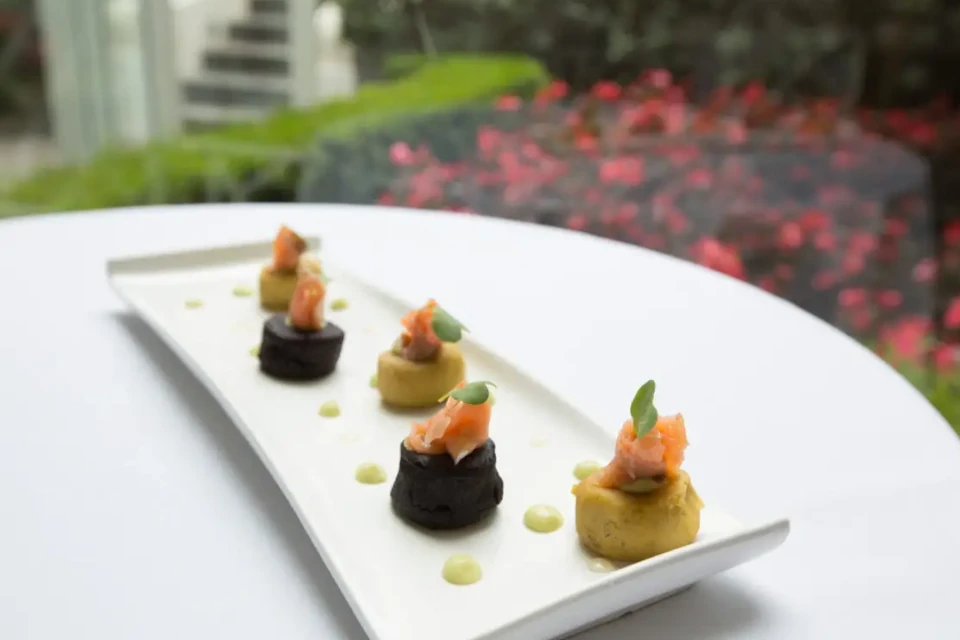
“We Ecuadorians are corn people!” says Andrés. Significant in the region’s culture long before the Spanish arrived in the 16th century, corn is found in myriad forms and culinary traditions around Ecuador: toasted or popped, in flour and alcoholic drinks, in desserts and snacks, and in every colour of the rainbow. There are even festivals dedicated to the corn harvest, such as the Yamor celebration in Imbabura.
In Casa Gangotena, corn is on the menu in various incarnations. There’s the white, puffy mote in the mote sucio (dirty) puree, a Cuencan dish so-called due to its stained colour when mixed with the sticky pork fat that drops to the bottom of the bowl when serving fritada.
There’s sweet corn, and also gluten-free corn flour, bought from the last miller in the Historic Centre, the Molino San Agustin, whose proprietor is 68 years old.
“Maintaining this tradition, that doesn’t have a price. It would be cheaper to buy it anywhere else, but it’s not the same,” says Andrés.
A trip to an Ecuadorian fruit market is an eye-opening experience for any foreigner. Here in the tropics, fruit comes in every shape, size and colour: the tiny, gleaming golden berry, yellow-tinged dragon fruit, purpled spiny achote, green, spikey guanábana and knobbly chirimoya. That’s not to mention the myriad varieties of banana.
At Casa Gangotena, the chefs work with whatever fruit is in season, adjusting the preparation and presentation accordingly. Take tuna (the fruit, not the fish), for example, otherwise known as the prickly pear, or cactus fruit.
Andrés explains how he incorporates the unusual fruit in a fish dish, by making it into an acidic gel.
“You just have to make it into a pulp, boil it, cool it, liquidate it, sieve it, then extract the bubbles. It’s simple!” he says, adding that it’s a way to introduce a product that is barely known in Quito.
“I could ask 20 friends if they eat tuna, and not one of them will say yes.”
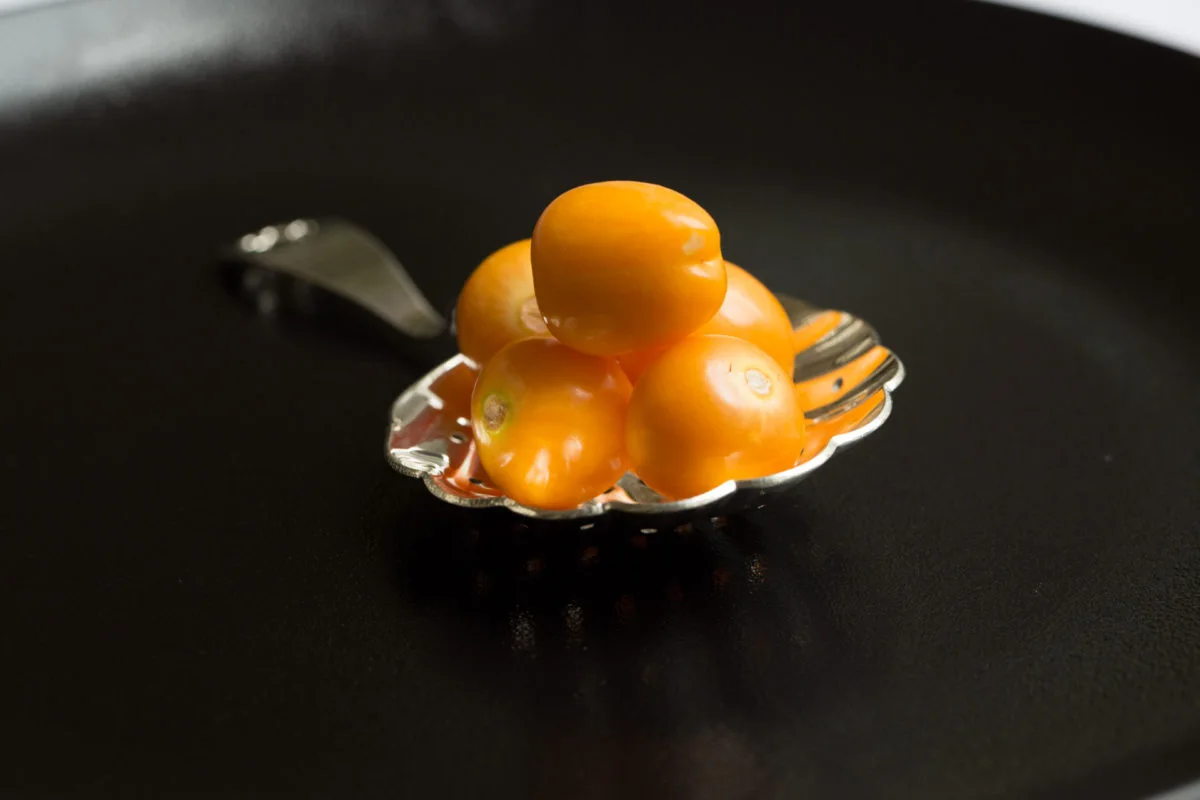
Casa Gangotena’s use of herbs is one of the first things that many guests of Casa Gangotena will experience, when they are offered an Agua de Frescos on arrival.
Lurid pink and decidedly refreshing, the drink is made of seven different herbs, including chamomile, lemon verbena, lemon balm, spearmint and mallow.
“We use Agua de Frescos because it’s really common here to use different types of herbal infusions as cures,” says Andrés.
“If you’re tummy hurts: oregano. If your body aches: chamomile. There’s an infusion for everything,” says Andrés.
Amaranth is one herb that appears in the Agua de Frescos, in desserts and on the cocktail menu in the Amaranto Pop drink. The herb, which also bears a pseudo-cereal grain, is only recently becoming re-popularised in Ecuador.
“Amaranth was banned by the Spanish in the 16th century as the indigenous people would use it in rituals, like sacrifices,” Andrés explains. “So consumption and cultivation were banned. They would cut off your hand if you were producing it.”
Though still not as popular as quinoa (even though it is a far more powerful superfood) amaranth is gaining traction, since NASA scientists began to see the true potential of the plant that indigenous Ecuadorians once considered to be a weed, and would feed to their cows.
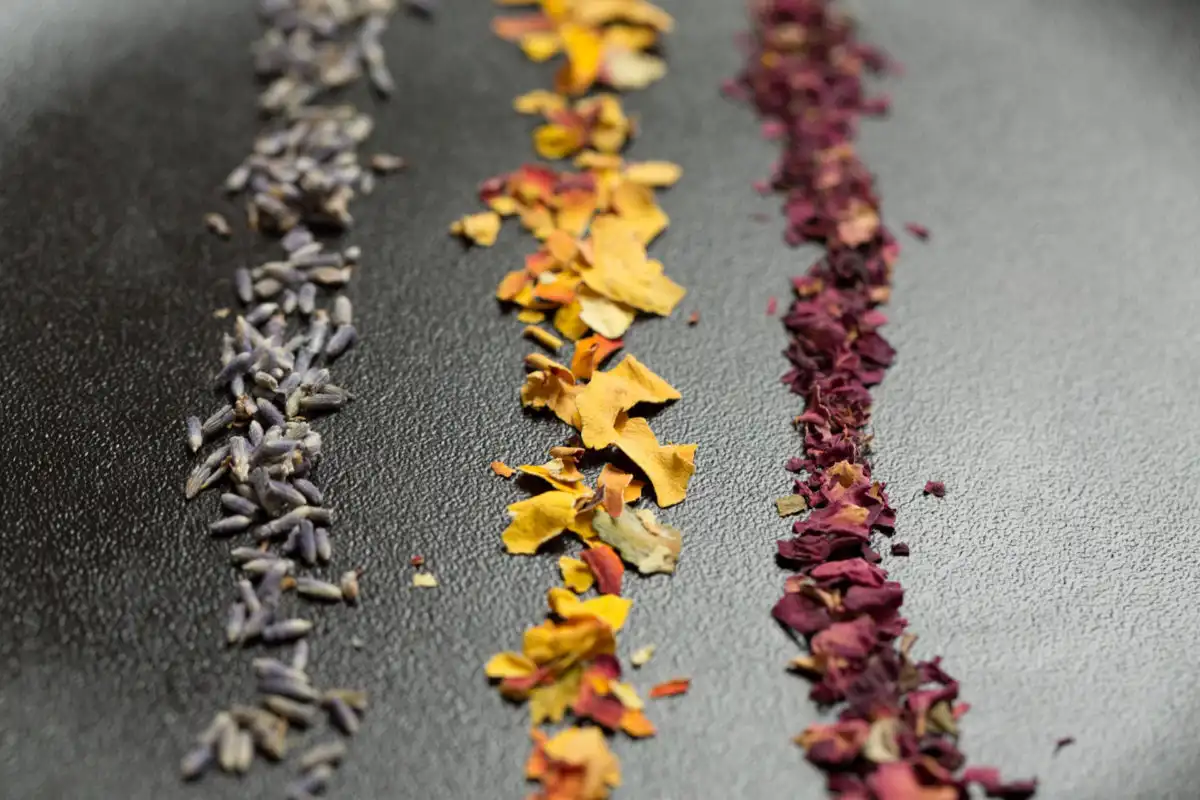
According to Andrés, this is part of Casa Gangotena’s strategy, to emphasise iconic Ecuadorian ingredients, and not to import from other countries.
“We try to use as many products as we can that are not popular. Like mountain garlic. Normal garlic isn’t Ecuadorian, all of it here is imported from China!” he says.



